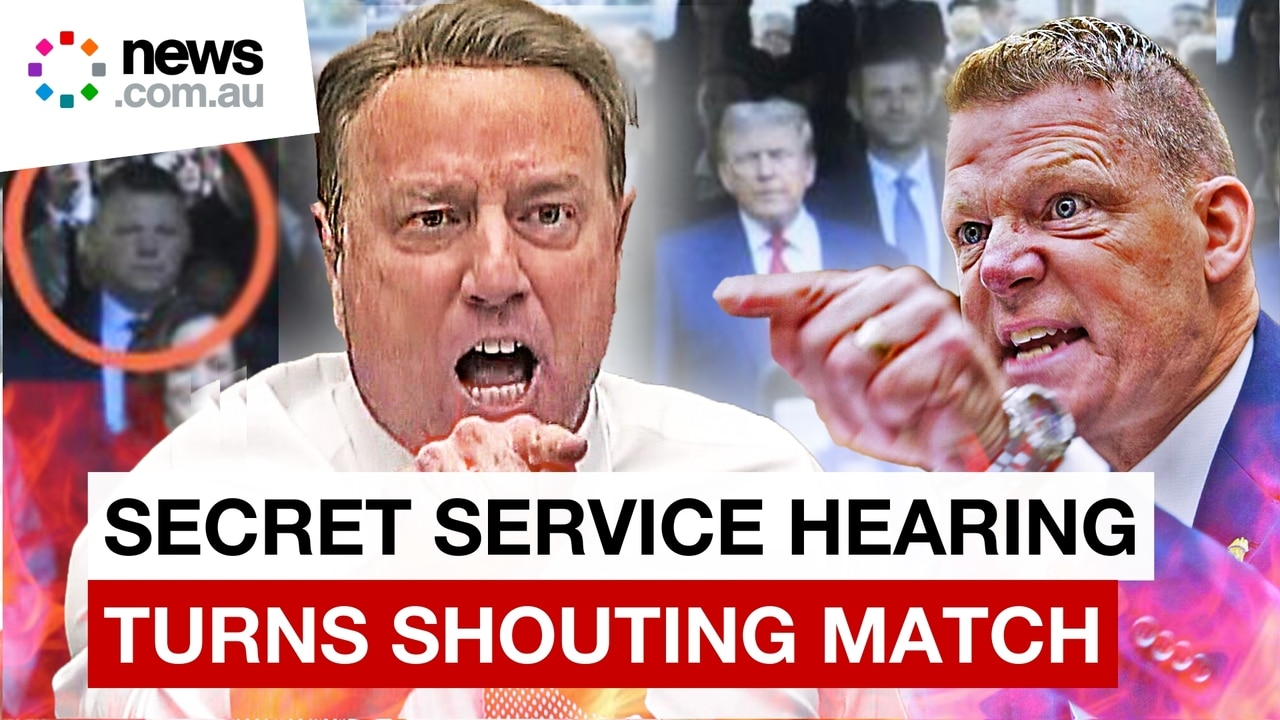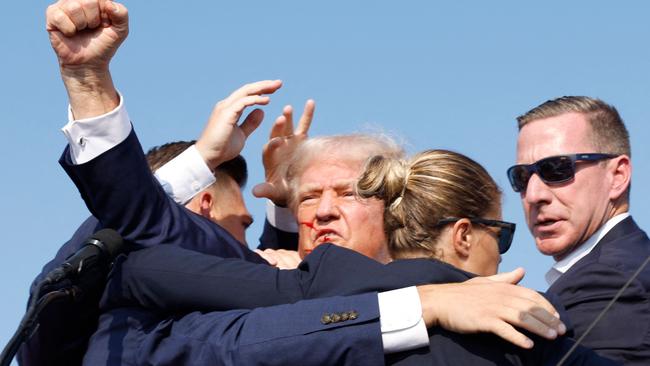‘Grave danger’: Report into Donald Trump assassination attempts released
A long-awaited report into the security failures that allowed a shooter to almost kill Donald Trump has been released.

World
Don't miss out on the headlines from World. Followed categories will be added to My News.
An extensive report on the assassination attempts against Donald Trump during this year’s election campaign has blamed the incident on a procession of security failures, rather than any single catastrophic mistake.
The country’s House of Representatives voted to set up a task force to investigate those failures after the first attempt on Mr Trump’s life in Butler, Pennsylvania on July 13, when the then-candidate’s ear was grazed by a bullet during an outdoor political rally.
If the would-be assassin’s aim had been even centimetres more accurate, Mr Trump likely would have been killed.
This was the attack that ended with an iconic image of a bloodied Mr Trump raising his fist to the crowd and shouting the word “fight”, before he was whisked away to safety by Secret Service agents.
Snipers shot and killed the gunman, 20-year-old Thomas Crooks.

In a second incident, on September 15, a gunman was spotted hiding in the bushes at Mr Trump’s golf club in Florida, where the candidate was playing a round.
Secret Service officers shot at the man, subsequently identified as Ryan Wesley Routh, and he fled the scene before being arrested a short time later.
Routh will face court early next year, and is looking at the prospect of life imprisonment.
The 13-person task force to look into the incidents, and set up by Congress, was bipartisan, with seven Republican members and six Democrats. It ultimately conducted 46 interviews, reviewed more than 18,000 pages of documents, and visited the scene of each assassination attempt.
Its report, published today, is quite thorough, running to 180 pages. You can read the whole thing here, should you be so inclined and sufficiently time-rich.
“The task force found that the tragic and shocking events in Butler, Pennsylvania were preventable and should not have happened,” the 13 members of Congress concluded.
“There was not, however, a singular moment or decision that allowed Thomas Matthew Crooks to nearly assassinate the former president.
“The various failures in planning, execution, and leadership on and before July 13, 2024, and the pre-existing conditions that undermined the effectiveness of the human and material assets deployed that day, coalesced to create an environment in which the former president, and everyone at the campaign event, were exposed to grave danger.”
The report is actually complimentary of the Secret Service’s work regarding the second attempt in September, saying “the events that transpired in West Palm Beach demonstrated how properly executed protective measures can foil an attempted assassination”.


The report identifies “several decision points” that “if handled differently, could have prevented” Crooks from firing eight shots at the stage, in Butler, while Mr Trump was giving a campaign speech.
“Foremost, the failure to secure a recognised high-risk area immediately adjacent to the venue – specifically the American Glass Research (AGR) grounds and building complex – gave rise to several vulnerabilities that eventually allowed Crooks to evade law enforcement, climb on and traverse the roof of the AGR complex, and open fire,” it said.
“Despite its proximity to a main road, clear sight lines to the stage, and elevated position, the Secret Service allowed a crowd that was not screened to gather at the fence line separating the secured area and the AGR complex.
“The presence of the crowd outside the secured area made Crooks more difficult to interdict as his behaviour became increasingly suspicious.”
That initial failure to secure the building upon whose roof Crooks took aim was “compounded by the fact that the area was not sufficiently monitored or patrolled to deter threats”.
“The Secret Service did not provide clear guidance to its state and local partners about which entity was responsible for the area,” the committee said.
“An expressed lack of manpower and assets was not sufficiently addressed, resulting in coverage gaps on the ground.
“Further, local snipers on the property understood their responsibility to be overwatch of the crowd and the venue, not the area outside the secure perimeter where Crooks loitered and prepared, believing that area to have been secured by Secret Service counter-snipers.”

Other failures involved “technology meant to supplement venue security” being down for hours, a “fragmented communication structure”, and “pre-existing issues” involving the Secret Service’s leadership and training.
The task force’s report includes 25 recommendations, based on the events in Butler, which are intended to prevent a similarly perilous incident in the future.
Most of them are redacted, though the publicly available report does recommend recording “all radio transmissions” at protective events and “considering staffing redundancies for high pressure moments”.
“On July 13, the Secret Service did not record its radio communications,” the report says.
“The absence of radio logs or recordings significantly limits the ability to reconstruct events
for either investigative or evaluative purposes.
To the extent that there are any technological limitations that prevent radio recordings or logs for all protective events, the Secret Service must prioritise addressing those challenges to enable this capability.”
More generally, the committee concluded “Congress must ensure that the Secret Service determines ways to strengthen its capabilities and reduce the strain on its resources” if it’s to sufficiently protect presidential candidates going forward.
Originally published as ‘Grave danger’: Report into Donald Trump assassination attempts released





